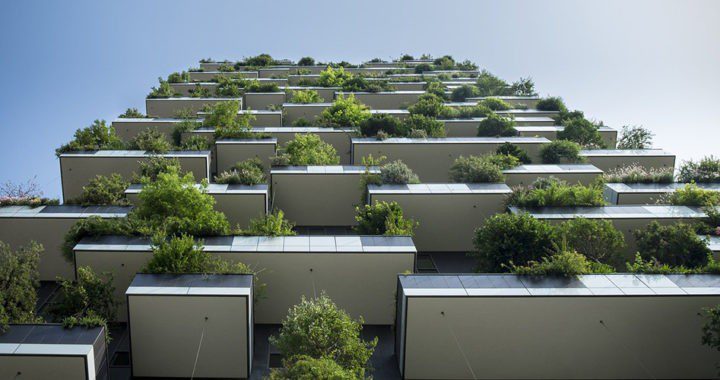Regenerative Design: Creating Architecture That Heals Our Planet

Introduction: The NextEra of Architectural Practice
The architecture profession stands at a critical juncture where sustainable design is no longer sufficient. Regenerative design represents a fundamental shift from minimizing harm to actively repairing ecosystems while meeting human needs. This approach creates buildings that function as living systems, contributing positively to their environments.
Why This Matters for Emerging Architects
- Industry Transformation: 65% of architecture firms now report client demand for regenerative projects (AIA 2023)
- Career Advantage: Professionals with regenerative design skills earn 20-30% higher starting salaries
- Planetary Imperative: The construction sector must achieve net-positive impacts by 2040 to meet climate goals
What You'll Learn
✔ The science behind creating buildings that give back more than they take
✔ How leading firms are implementing these principles today
✔ Actionable strategies you can apply immediately
✔ Tools to measure and communicate your impact
Visual Aid Suggestion: "The Regenerative Design Spectrum" - An infographic showing the progression from conventional to sustainable to regenerative design, with key differentiators at each stage.
2. Theoretical Foundations: Principles That Create ImpactCore Concepts Redefined1. Net-Positive Performance
- Buildings must actively improve their sites ecologically and socially
- Key metrics: Energy production, water regeneration, biodiversity enhancement
2. Systems Thinking
- Understanding buildings as nodes within larger ecological networks
- Example: Designing stormwater systems that recharge local aquifers
3. Contextual Responsiveness
- Solutions must be place-specific, respecting local ecology and culture
Pro Tip: "Regenerative design starts with listening - to the land, the climate, and the community. The best solutions emerge from this deep understanding." - Amanda Sturgeon, FAIA
Visual Aid Suggestion: Diagram illustrating the interconnected systems in regenerative design (energy, water, materials, biodiversity, community).
Practical Applications: Case Studies That Inspire Action
Case Study 1: The Kendeda Building for Innovative Sustainable Design, Georgia Tech (2019)Implementation Highlights
- Generates 115% of its energy needs through solar power
- Treats and reuses 100% of captured rainwater
- Created 30% more biodiversity than the original parking lot
Key Lesson: The project team included ecologists from the first charrette, ensuring all systems worked synergistically.
Case Study 2: Bosco Verticale, Milan (Stefano Boeri Architetti, 2014)Quantified Impacts
- 800 trees, 15,000 plants absorb 30 tons of CO2 annually
- 15% reduction in urban heat island effect
- 40% increase in local bird species
Overcoming Challenges: Structural engineers collaborated with botanists to develop specialized growing media and irrigation systems.
Case Study 3: PAE Living Building, Portland (ZGF Architects, 2022)Innovative Features
- Composting toilets saving 250,000 gallons annually
- Mycelium-based acoustic panels
- All materials meet Living Building Challenge Red List requirements
Visual Aid Suggestion: Comparative matrix showing these three projects across key regenerative metrics (energy, water, materials, biodiversity).
Technical Considerations: Making It Work in Practice
Essential Standards and Metrics
- Living Building Challenge 4.0: The most comprehensive regenerative standard
- SITES v2: For landscape regeneration strategies
- WELL Building Standard: Focusing on human health outcomes
Critical Calculations
- Biodiversity Net Gain (BNG) metrics
- Whole-life carbon assessments
- Water balance calculations
Pro Tip: "Don't let perfect be the enemy of good. Many successful regenerative projects began with the best available data and improved through monitoring." - Bill Reed, Regenesis Group
Visual Aid Suggestion: Flowchart showing the regenerative design decision-making process from site analysis through post-occupancy evaluation.
Implementation Guide: Your Roadmap to Regenerative Practice6-Step Framework for Success
- Site Listening Phase
- Conduct comprehensive biophysical and cultural surveys
- Host community visioning sessions
- Goal Setting
- Establish measurable regeneration targets
- Align with relevant certification systems
- Integrated Design Process
- Assemble interdisciplinary teams early
- Use iterative modeling and prototyping
- Material Selection
- Prioritize local, non-toxic, and reusable materials
- Verify through Environmental Product Declarations
- Regenerative Construction
- Implement soil protection protocols
- Monitor embodied carbon in real-time
- Performance Monitoring
- Establish 5+ year evaluation plans
- Create feedback loops for continuous improvement
Visual Aid Suggestion: Gantt chart showing the regenerative design process across project phases with key milestones.
Common Mistakes and How to Avoid Them
| Pitfall | Solution | Case Example |
|---|---|---|
| Over-engineering systems | Start with passive strategies | PAE Building used natural ventilation before mechanical systems |
| Underestimating maintenance | Design for easy stewardship | Bosco Verticale's robotic window cleaning system |
| Isolated interventions | Create connected systems | Kendeda's integrated water management approach |
Pro Tip: "Your first regenerative project doesn't need to do everything. Focus on 2-3 systems you can execute exceptionally well." - Jason McLennan, Living Future Institute
Essential Resources for Getting StartedDigital Tools
One Click LCA: For whole-life carbon assessment
- i-Tree: Quantifying urban forest benefits
- Living Future Institute's Biophilic Design Toolkit
Educational Resources
- Regenerative Development and Design by Pamela Mang
- The Regenerative Design Playbook by Regenesis Group
- AIA Continuing Education courses on regenerative practice
Professional Networks
- International Living Future Institute
- Biomimicry Institute's Design Challenges
- Urban Land Institute's Resilience Program
Conclusion: Your Role in Shaping the Future
The transition to regenerative architecture represents our profession's most significant opportunity to address the climate and biodiversity crises. As emerging professionals, you bring the fresh perspective needed to accelerate this transformation.
Three Actions You Can Take Today:
- Conduct a regenerative audit of your portfolio work
- Volunteer with a local habitat restoration organization
- Advocate for regenerative principles in your first position
Remember the words of Janine Benyus: "In regenerative design, we're not just less bad, we're actually good. Our buildings can be like trees - actively improving their environment."